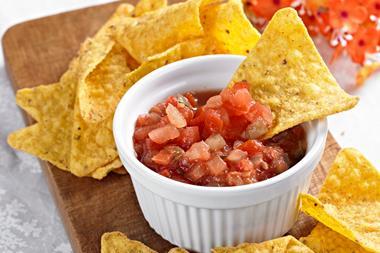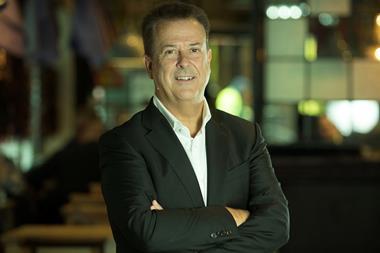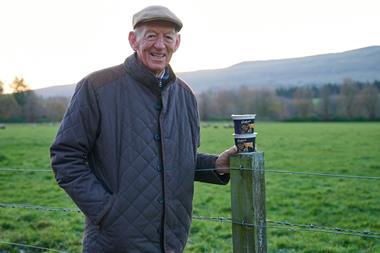Our grass is greener
With a 'great story' to tell, Waitrose was no longer prepared to be shouted down by its rivals. Mark Price took up the cudgels. He explains his approach to Belinda Gannaway
Mark Price had a challenge put in front of him two years ago when he was asked to set up Waitrose's first marketing directorate. It wasn't just a new departure for the supermarket group, but a first for the whole of the Partnership.
"All our time, energy and finances had been concentrated in the service we gave our customers, whether it be product, personal service or our stores," he explains.
"But the view was that we had begun to be shouted down by our competitors. We had a great story but perhaps people weren't as aware of it as they should be."
Price's job was simple look at the message being communicated and raise the company's profile. There was a blank sheet of paper in front of him. But from the outset it was clear what would form the hub around which the marketing activity would revolve food excellence.
Price says: "We're very good at food and we have many long-standing partners providing an excellent level of service to our customers. In overall marketing terms that's where we have to be. We have to be at the top end of the market. We have to be about food excellence and expertise."
But how does a top end some say exclusive marketing strategy hold up in a time of mega price activity from your competitors?
For Waitrose the answer is in subtle reassurance about the price competitiveness of everyday items.
"Because we sell high quality products, and what people might term exotic products, we are at the top end of the market. But we still sell milk and we still sell bread and cornflakes. And we sell them at the same price as the competition. Customers need to know that when they buy Heinz baked beans at Waitrose it doesn't cost any more than anywhere else that's our Price Commitment," Price says.
But that doesn't make Waitrose a price-led business. "We're about being product-driven, service-driven and quality-driven. But we can't ignore that, for a large portion of our customers, price is important. Regrettably, many believe that the same item in Waitrose costs more than in our competitors that's not true."
Price believes that perception is changing in part due to the Price Commitment launched in April 1999. But eliminating those misconceptions once and for all while maintaining its image as a quality purveyor of fine foods was a careful balancing act.
"If you were to push me on which is more important, I'd say being clearly marked out as having a distinctive market position and that people associate Waitrose with excellent quality fresh food," Price says.
The launch of Waitrose Food Illustrated is a key part of that profile as well as an important loyalty driver Price is vehemently opposed to loyalty cards themselves and has spoken out vociferously on the topic on many occasions.
"Waitrose Food Illustrated is important in positioning Waitrose at the top end of the market and being trendy' in knowing what's fashionable in food and knowing what the issues are."
Additionally, with an authoritative and independent editorial voice, the magazine is driving sales in store of featured products.
The magazine now has a monthly circulation of 250,000 and is mailed free to Waitrose and John Lewis account card holders. But although the most visible marketing tool employed by the marketing directorate, it is just one.
The department carefully integrates advertising, instore promotions and web-based marketing literature to tie in with features in Waitrose Food Illustrated to ensure a cohesive and weighty message. Price was also responsible for Waitrose's first move into TV sponsorship and commissioning programmes on the Carlton Food Network.
"We try and go right across the channels with the same story," Price says.
Waitrose has certainly made an impact with its marketing approach in just two years. Although it does not pitch its marketing approach as "aggressive", Price says he is "very keen to tell it the way it is".
He adds: "Waitrose isn't publicly quoted so we don't have shareholders to please. That means we can tell the e-com story the way it is and can talk about loyalty the way it is." As a consequence Waitrose has had a couple of high-profile battles, including one with Sainsbury over which was the first supermarket to remove GMOs from own label. "We did that four or five months ahead of them," Price claims.
The ASA agreed and forced Sainsbury to pull the ads.
"We contested that because we didn't think it was fair. It's not fair on the public, but it's also not fair on the Partners that they should read something in the newspaper that's clearly not the case."
Likewise, Waitrose objected to Marks & Spencer's copy-cat mimicking of its advertising "style".
"It's our own unique property and I think it's very important we said Hey, this our our style. Just because we're not a big player you can't take our creative style.'"
And that's just what Price wants to continue to maintain a unique story told in Waitrose's own definitive, yet remarkably modern style. n
{{Z SUPPLEMENTS }}
Close menu
- Home
- Retail & Wholesale
-
Products & Suppliers
- Back to parent navigation item
- Products & Suppliers
-
Product Categories:
- Back to parent navigation item
- Product Categories:
- Alcoholic drinks
- Bakery
- Cereals & breakfast
- Cheese
- Chicken & poultry
- Chocolate
- Confectionery
- Crisps, nuts & snacks
- Dairy
- Fish
- Fresh produce
- Frozen
- Household
- Meat
- Own Label
- Sauces & condiments
- Seasonal
- Soft drinks
- Vaping
- Vegan & plant-based
- World foods
- Suppliers
- People
- Reports & Data
-
Topics A-Z
- Back to parent navigation item
- Topics A-Z
-
Popular topics:
- Back to parent navigation item
- Popular topics:
- Cost of living crisis
- Crime
- Deposit Return Schemes
- Finance
- Government & Regulation
- Health
- Inflation
- Loyalty
- Marketing
- Mergers & Acquisitions
- New Product Development
- Sourcing
- Supply chain
- Sustainability & environment
- Technology
- Ultra Processed Foods
- Vaping
- A-Z all topics
- Content by type:
- Events
- Ask iA (beta)
- Subscribe now
Sign in to comment on this article
Not logged in before? Register for FREE guest access today.
You will be able to:
- Read more stories
- Receive daily newsletters
- Comment on stories
Advert



















No comments yet